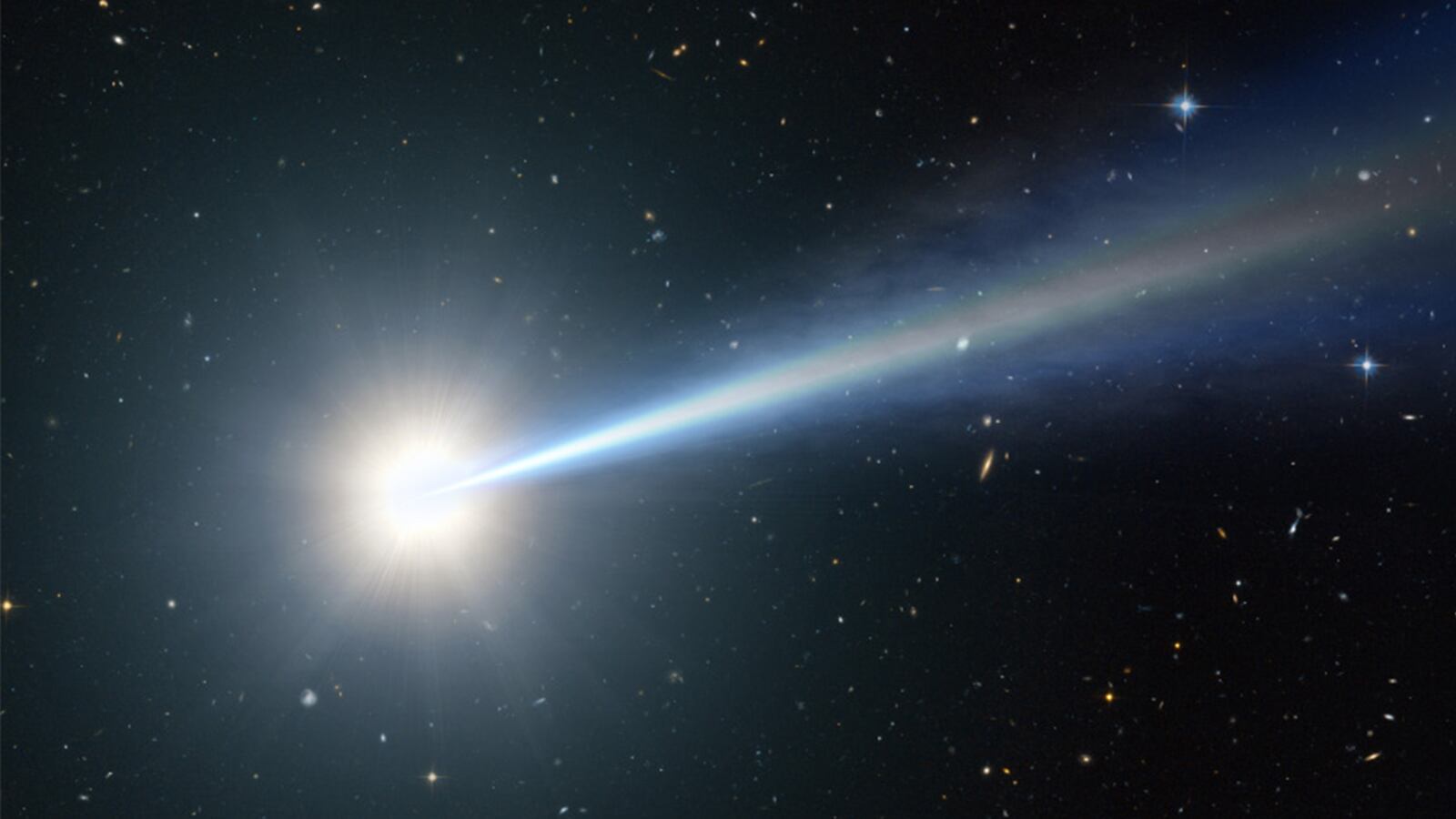Something fascinating is going on in the gravitational dance of galaxies, from watching the slow twirls of the dancers.
Galaxies in the Universe are not spread out randomly; instead, they form a vast web, forming clusters with long filaments connecting them, and deep voids in between. That structure seems to affect the galaxies within it, too—at least some rotate with their axes aligned with the filaments they inhabit, like beads on a string.
Now, a new observation seems to show that black holes also behave according to their place in the cosmic web. In at least some cases, the disk of matter spinning around a black hole seems to be aligned with cosmic structure, based on these measurements. That means that two galaxies separated by billions of light-years could have black hole disks spinning in the same direction, even though they never were in the same place and couldn’t influence each other. The sample is pretty small—only 19 black holes showed this alignment—but the agreement with earlier galaxy results shows something interesting may be going on.
In a new paper published in Astronomy and Astrophysics, astronomers D. Hutsemékers, L. Braibant, V. Pelgrims, and D. Sluse looked at the light from 93 black holes in a giant group of galaxies about 9 billion light-years away. These black holes are a type known as quasars: extremely massive objects that emit more light than the rest of the galaxy. The powerful forces of gravity and magnetism channel matter into huge flattened spinning platters known as accretion disks. Other matter is blasted back into space as bright jets, which are aimed more or less toward us; it’s that alignment that make quasars so incredibly bright.
At that great distance, even our best telescopes can’t see those jets directly, much less the spin of the quasars that make them. Instead, the authors of the study looked at how the light was polarized, the same sort of twisting of light that creates glare off water or snow. The direction of polarization for a quasar is determined by the accretion disk surrounding it. That means even if we can’t see the disk itself, we can infer what direction it’s spinning—or rather the axis of its rotation, since the polarization doesn’t distinguish between clockwise and counterclockwise.
The astronomers found that of the 93 quasars in the sample, 19 exhibited a measurable amount of polarization. These showed strong alignment with the cosmic web, including several aligned with each other despite huge separations in space. From their statistical analysis, they concluded this had only a one percent chance of happening randomly. That is, if you took 19 sticks and scattered them randomly over a map of the cosmic web, you’d only get chance alignment for all 19 of them one time in 100. (Okay, it would need to be a 3D map, but you get what I mean!)
The black holes at the centers of galaxies that power quasars are the most massive single objects in the cosmos, weighing in at millions or billions of times the mass of stars. Studies of the most distant galaxies show that they got that big very early in history, rather than starting small and growing slowly over time. The cosmic web is the result of the slow action of gravity, which draws together matter in an escalating fashion: more mass means more gravity, which attracts yet more mass.
The growth of black holes and galaxies are linked, though the details are still sketchy in places. If galactic rotation and the spin of black hole accretion disks are linked to the cosmic web, there’s another layer of structure with intriguing possibilities. Unfortunately, these results are not yet connected: the galaxy rotation data is for closer galaxies, which are less likely to harbor quasars, and we have no information yet about the rotation of the hosts of the quasars at 9 billion light-years distance.
Also, the accretion disk results are based on only 19 galaxies out of 93 where the researchers could measure strong amounts of polarization. (The authors took care to eliminate the possibility of other sources of polarization, which is always a concern in astronomy.) The observable Universe contains around 100 billion large galaxies and a comparable number of supermassive black holes.
While 19 alignments are pretty unlikely, they are all within a single large association of quasars out of all the possible galaxies in the cosmos. It would be good to see if these accretion disk results hold up for most galaxies, the fact that closer galaxies show some alignment is suggestive. That leads us to wonder why galaxies and their black holes somehow “know” where they are in the cosmic web.






